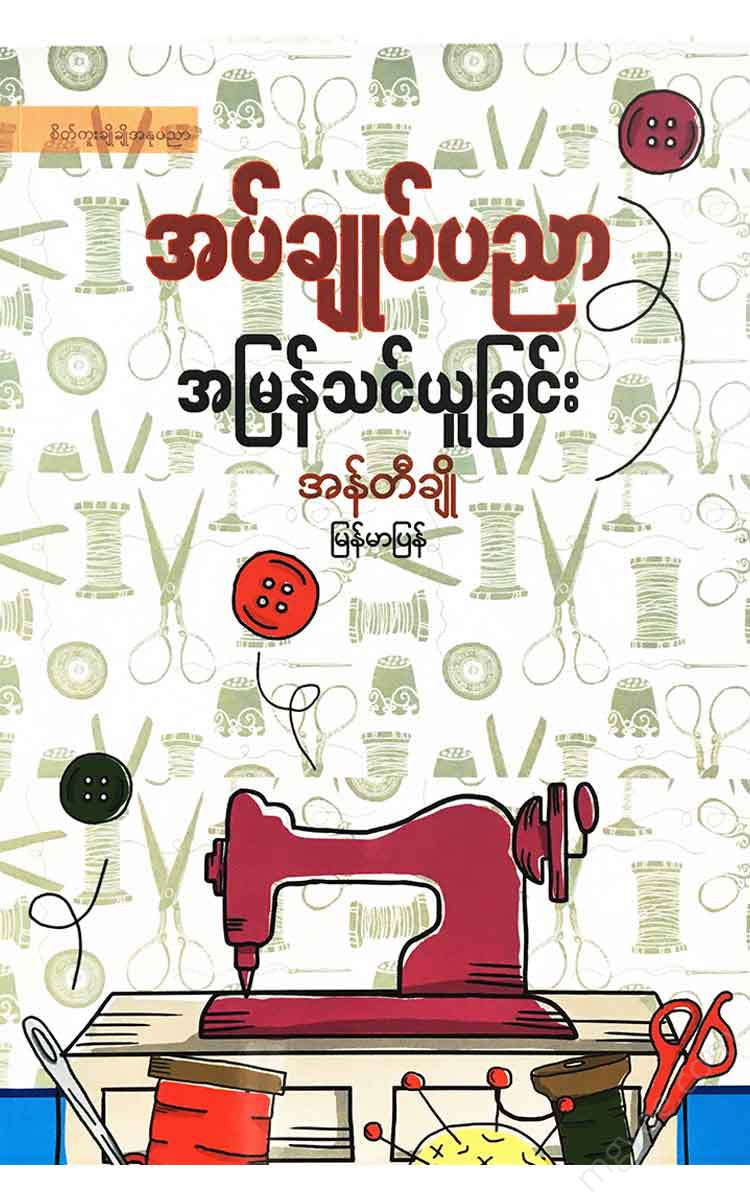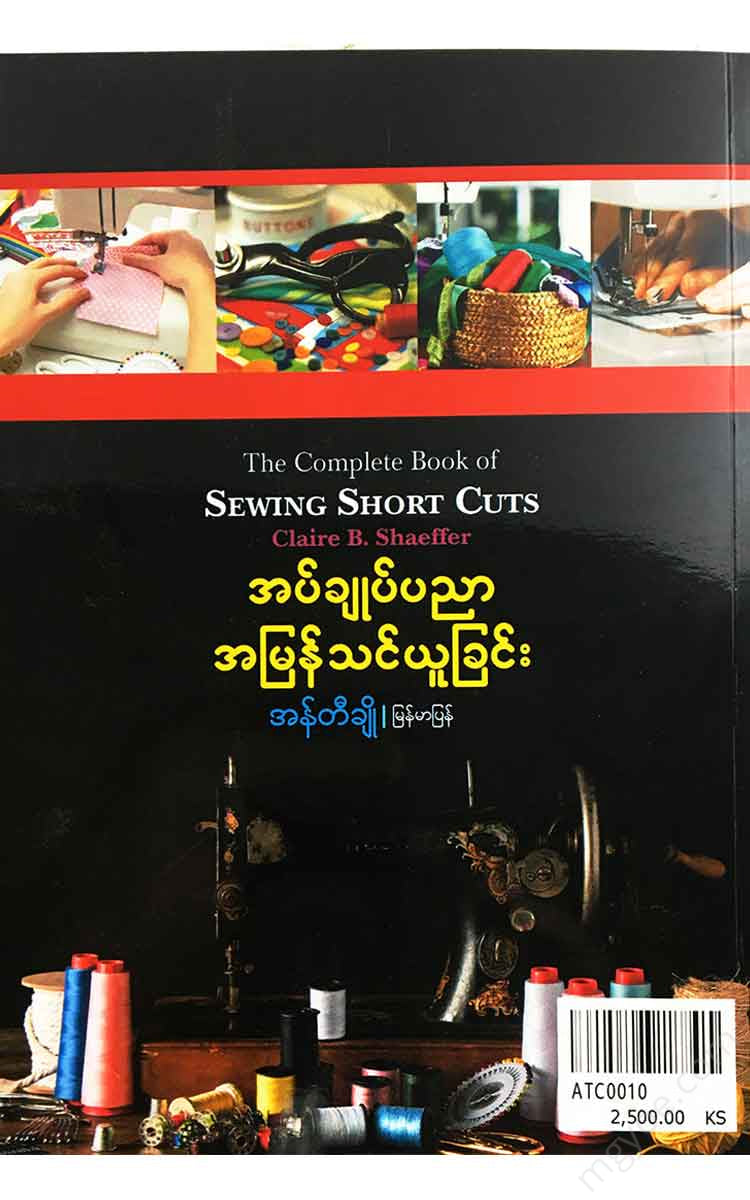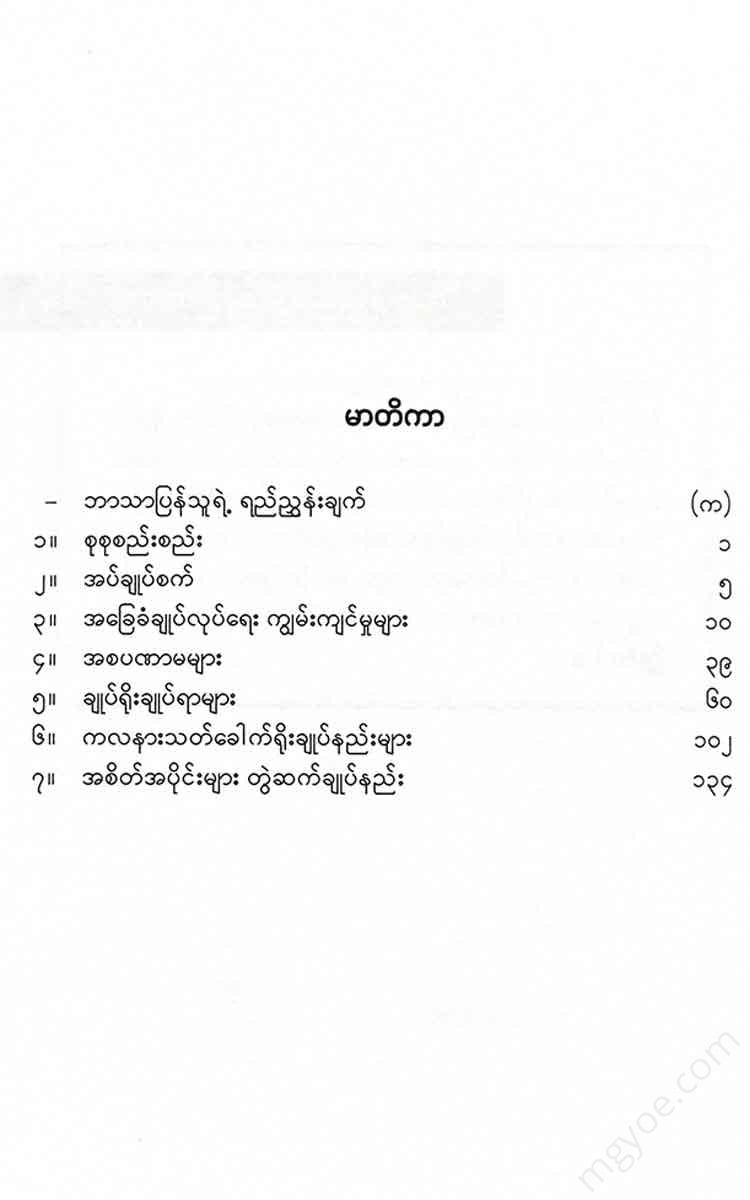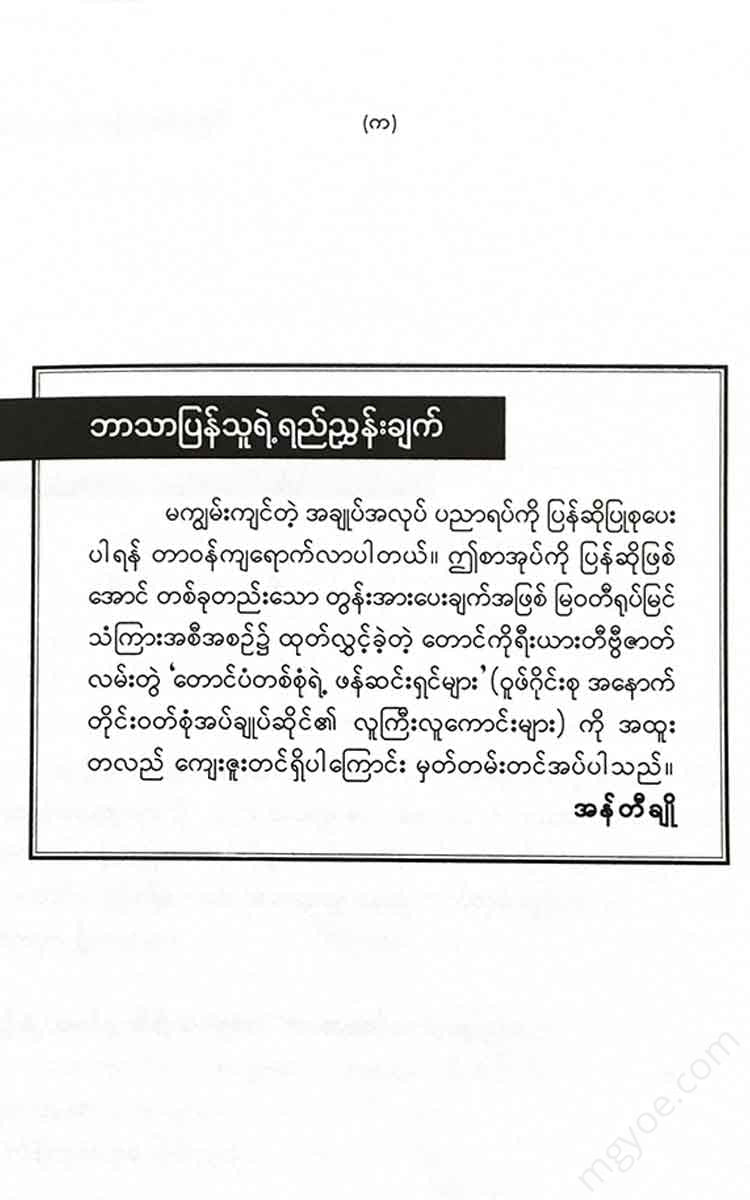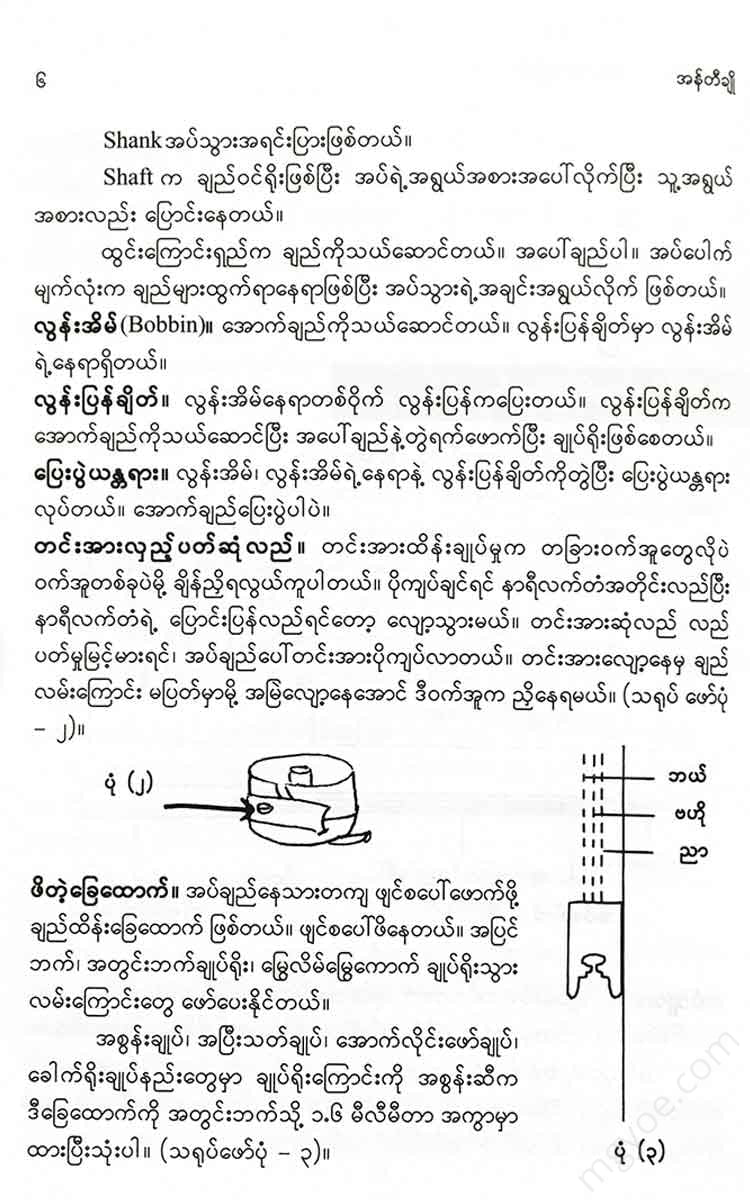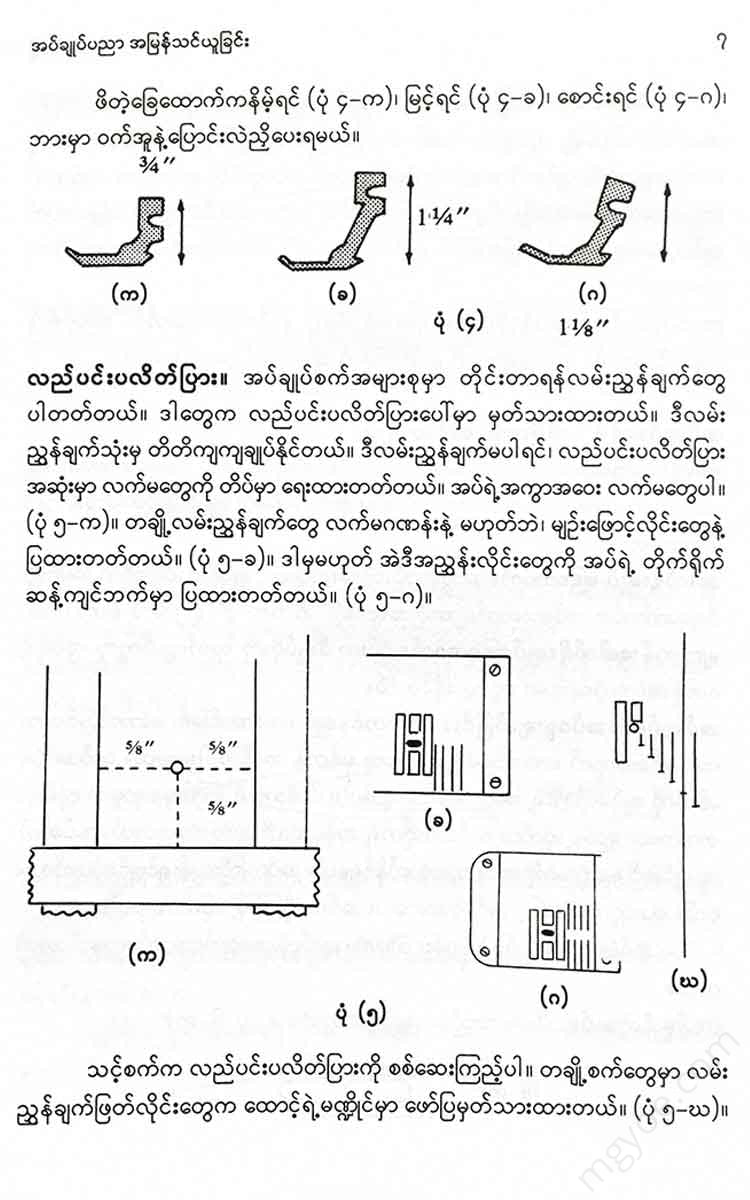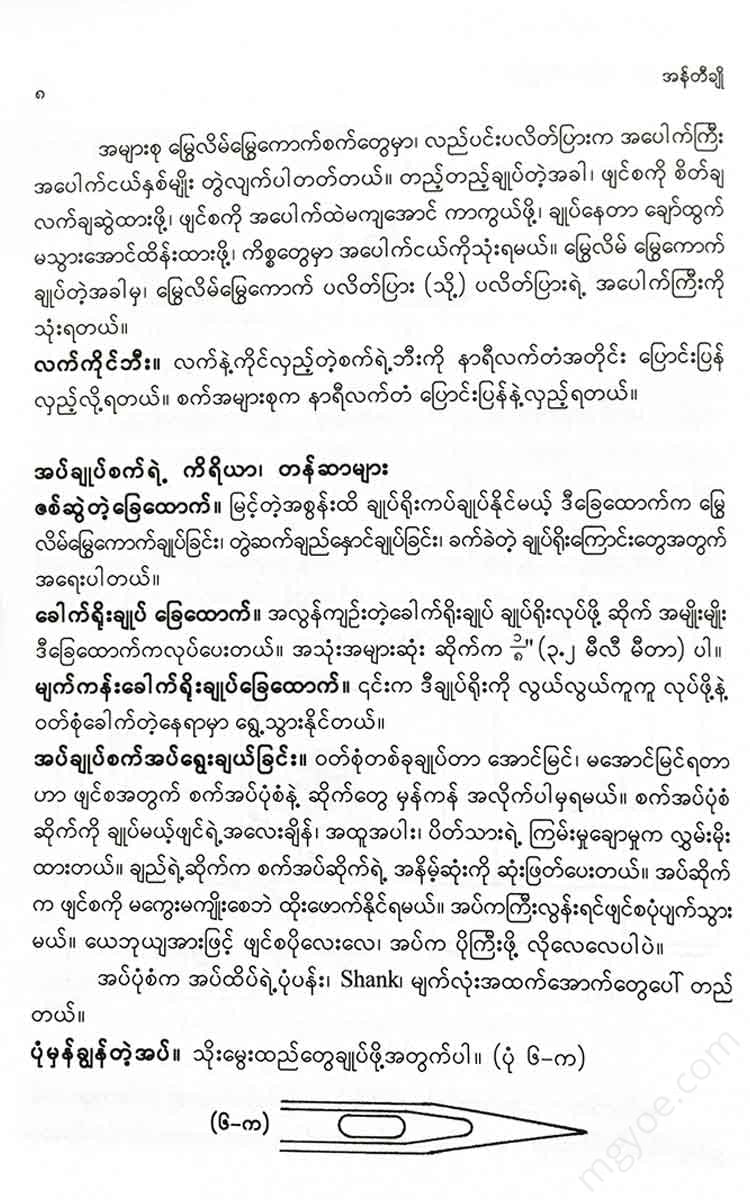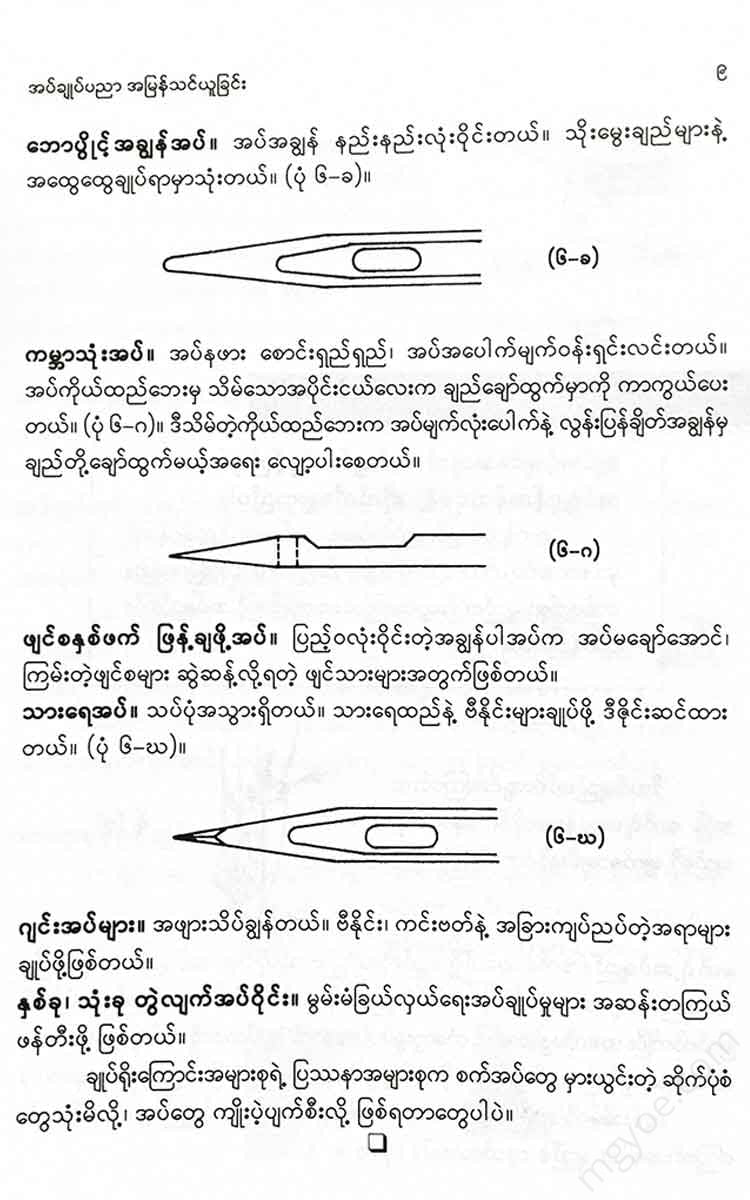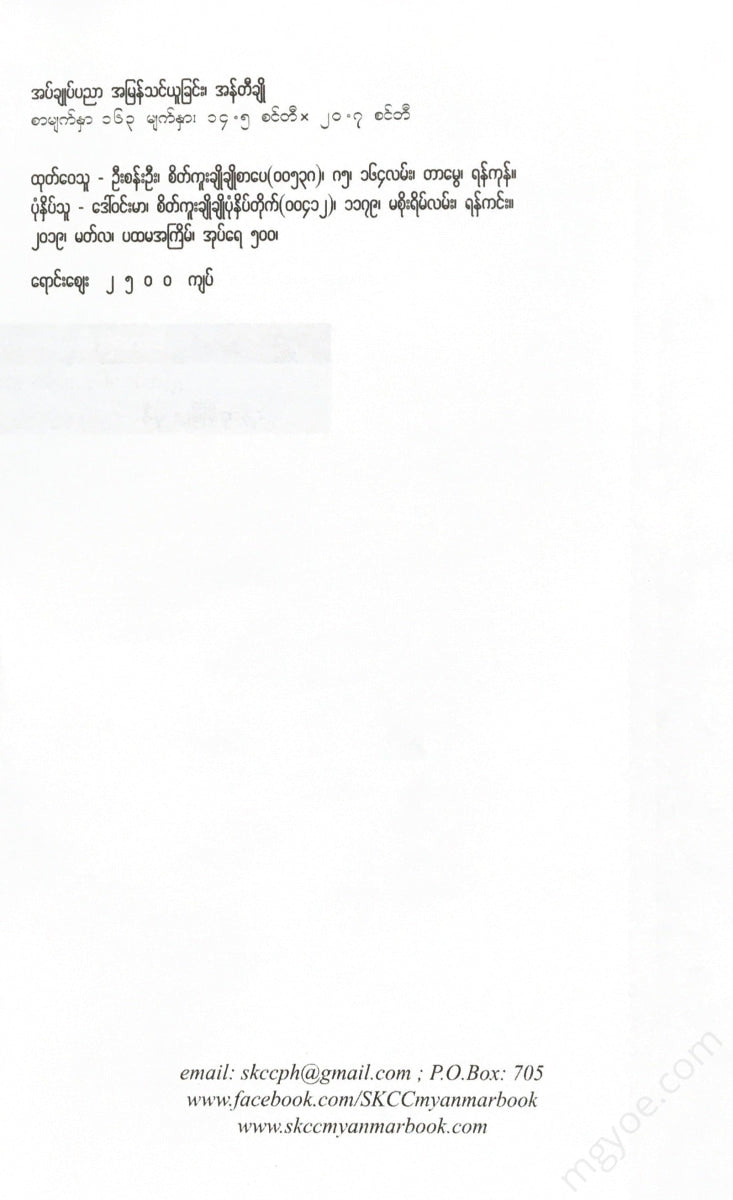စိတ်ကူးချိုချိုစာပေ
Aunty Cho - Quick sewing tutorial
Aunty Cho - Quick sewing tutorial
Couldn't load pickup availability
1.
Gather together
Gather, gather, gather. This book is a complete and professional guide to all the quick sewing techniques in sewing.
Gather your sewing tools, markers, and supplies near your sewing machine. Keep them organized in a toolbox. Arrange them on trays so they are easy to see. Keep everything within arm's reach while you sew.
Gather your hand tools and supplies.
There will be hundreds of hand tools, big and small, and hundreds of different types. You don't need expensive tools to sew well. Just good tools. They should save you time and energy.
Cutting tools
Scissors, shears. Large shears for cutting hedges, ordinary shears should be made of steel. They should not rust at all. The blades should be nickel-plated. This will prevent the edges from slipping when cutting. The difference between scissors and large shears is the shape of the handle, and the two handles of large shears are different in size and shape.
Rotary Cutter. The invented Rotary Cutter is a cutting knife that cuts through traces, so it is sharper than a regular knife. It can cut thick fabrics quickly. It can be used with both left and right hands. Place the fabric on the cutting table or cutting board and cut.
Cutting table. A table used for cutting and trimming fabrics. It is 36 inches high and should have a hard surface. Most of us work on it at the dining table. Since this type of table is only 30 inches high, it tends to make the worker bend over.
Measuring instruments
Tape : A tape measure is essential. You need to mark the beginning and end of your measurement. A soft plastic ruler. It should be able to see through the top and bottom. You can use either a 2" x 12" ruler with a wide edge or a 1" x 12" ruler with a narrow edge.
Chalk for marking. You can use either chalk or blue chalk that can be erased with water. It should not leave any marks on your clothes.
Water-erasable pencil. You can mark and erase with water. Do not press the cloth.
General tools and equipment
Pins. Use stainless steel pins. Buy about a pound of them. Do not reuse pins that have been used. They are prone to breakage. Do not throw used pins on the floor or table. If you use pins with plastic heads, they are longer and are useful for joining clothes.
Needle holder. When sewing by hand, the fingers and thumb should be held together, and the needle holder should be inserted before sewing. The needle holder should be long and deep. If it is shallow, the hand may slip and the needle may prick the needle.
Needles: Use small needles (size 8/9) for hand sewing. Large needles are for synthetic fibers. Crochet needles are for knitting holes and filling.
Sewing needles (size 18/20) are for sewing buttonholes together and for very thin fabrics.
Compression tools
Iron. An electric iron is best. The bottom should be a non-metallic surface so that the fabric doesn't crease. You can press it vertically and horizontally. Compression garments. You will need plenty of clean clothes. You should press the same clothes together.
Compression wrap. Compression wrap, made of a combination of polyester and polyester fibers, is used to compress embroidery, buttonholes, pockets, and collars.
Attention children
Paper. You will need many different types of paper for sewing. There are many different types of paper that are useful in their own right, including drafting paper, tracing paper, tracing paper, waxed paper, tissue paper, and carbon paper.
Glue. When using a regular, washable glue, you can stick the raw edges of the fabric together and then remove it without any problems. Glue is useful for double-stitching pockets, zippers, background seams, collar panels, and hems.
Dead-end glue is used for bottom hems and seam allowances on garments. This type of glue is colorless, but it can cause dark stains on some fabrics.
Thread. You should use long polyester threads for most of your sewing. Nylon threads work well with many fabrics. Nylon threads make it easier to see the stitches. However, if you use an iron, the stitches may melt if the heat is too high.
Star-shaped silk thread . It is a strong thread that does not break even after a long stretch. The silk quality makes it easy to gather.
Other time-savers
Sewing log . A log book that records in detail how you sewed each garment. It records the type of fabric and the seam allowance, the number of stitches, the sizes, how you changed the stitches, the amount of fabric you used, and any problems you encountered during the sewing process.
Plastic card : Using a small, soft plastic card at the top of the fabric and using it to fasten the buttonhole at the bottom of the garment will also help prevent damage to the fabric.
Beeswax or white candle. To reduce the risk of warping and fraying, rub beeswax or candle along the thread to straighten it. Be careful not to let the wax or lint stick to the thread.
Rubbing alcohol, hairspray. You can use rubbing alcohol or hairspray to remove any pen ink left on the fabric.
Bath soap. Many chemical fabrics tend to have a strong chemical smell. Washing with bath soap will remove the smell. Do not wash with detergent.
Thin aluminum foil. Covering the cardboard with thin aluminum foil is for compression. Cleaning the iron. Keep the iron clean. It should not be covered with sand, dust, or even cobwebs. If the iron's base plate is dirty, the fabric will be dirty too.
